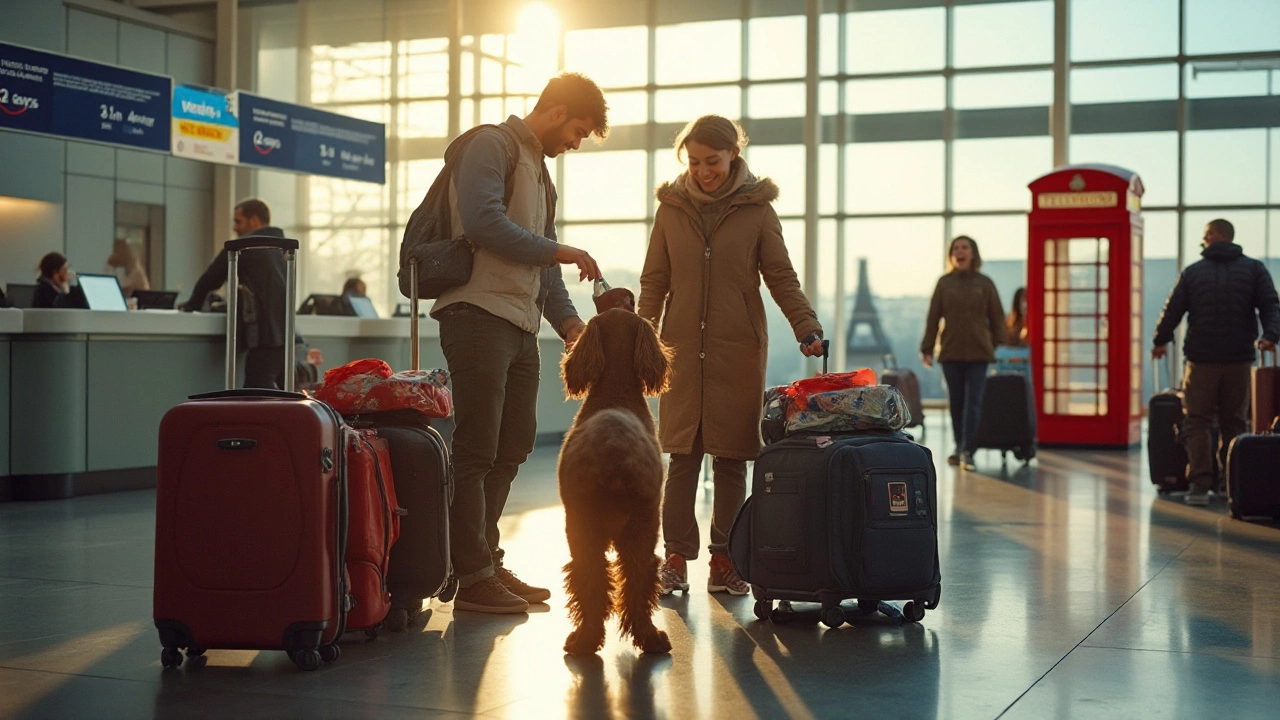Pet Travel Restrictions: Essential Guide for Dog and Cat Owners
If you’re planning a trip with your furry friend, you’ll hit a wall of rules before you even reach the gate. From airlines asking for paperwork to beaches that ban certain breeds, the restrictions can feel endless. The good news? Most of them are simple to follow once you know what to expect. Below you’ll find the basics you need to get your pet on a plane, in a car, or onto a sand dune without drama.
Airline and TSA Rules
First stop: the airport. Every airline has its own pet policy, but they all ask for a health certificate issued within ten days of travel. Some carriers also require a recent rabies shot record. If you’re flying in‑cabin, your pet must fit in a carrier that fits under the seat – usually no larger than 18×11×9 inches. The carrier needs a breathable top, sturdy zippers, and a label with your name and contact info.
For cargo, the rules are stricter. The airline will inspect the carrier for ventilation and secure locking. Many airlines ban brachycephalic breeds (like Bulldogs and Pugs) in cargo because they’re prone to breathing issues. Check the airline’s breed list before you book, or consider a different carrier that lets your pet travel cabin‑side.
The TSA doesn’t inspect the pet itself, but they do look at the carrier. Make sure the carrier is clear of any prohibited items (like liquids over 100 ml) and that it’s easy to open for inspection. Anything that looks like a weapon or dangerous object can delay you.
Timing matters, too. Feed your dog a light meal 4‑6 hours before the flight, and give water right up until you go through security. A full stomach can cause nausea, while dehydration can make anxiety worse. Some owners use a calming chew or a short‑acting sedative prescribed by a vet – never give over‑the‑counter meds without veterinary advice.
Beyond the Airport: Other Travel Limits
Once you’re past security, you’ll still face local rules. Many national seashores and state parks have pet‑specific guidelines. For example, some beaches only allow dogs on leashes during certain hours, while others ban pets completely during bird nesting season. Always check the local council website before you pack the beach towel.
If you’re traveling by car, the law varies by state. In the UK, it’s illegal to let a pet ride in the front seat without a restraint. In the US, many states require pets to be secured in a carrier or harness. A crash‑tested pet carrier or a pet‑seat belt can keep your dog safe and keep you from getting a ticket.
International travel adds another layer. Some countries need a pet passport, a microchip, and a blood test for rabies antibodies. The paperwork can take weeks, so start the process early. Skipping a step can mean your pet gets turned back at the border.
Lastly, remember that restrictions are often about safety, not inconvenience. Keeping your pet healthy, calm, and well‑documented protects both of you and makes the journey smoother for everyone.
Now you’ve got the core rules in one place. Check each airline’s website, grab the right carrier, and double‑check local beach and park policies before you go. With a little prep, you and your pet can travel without the hassle and enjoy the adventure together.
Airlines That Restrict Pets: Travel Tips and Information
Traveling with pets can be a challenge due to varying airline policies. While some airlines warmly welcome furry friends, others have specific restrictions or do not allow pets in the cabin or cargo hold. This article provides an overview of these airlines and offers practical tips for pet parents to navigate air travel. It's important to know your options to ensure a smooth journey for both you and your pet.
